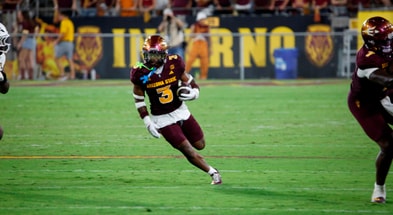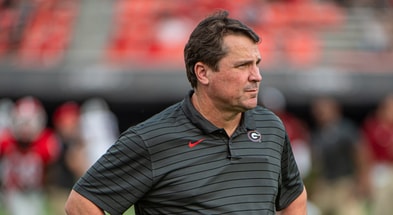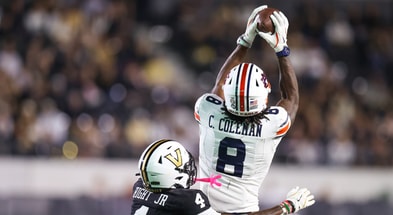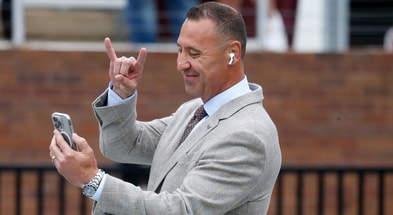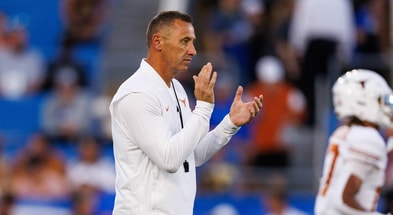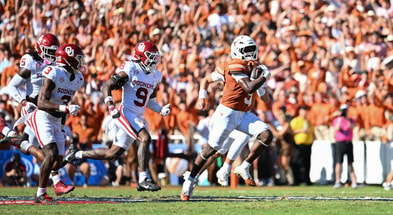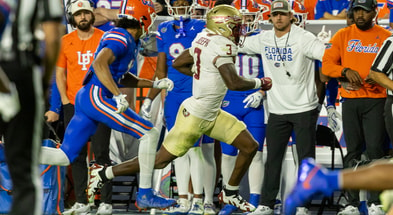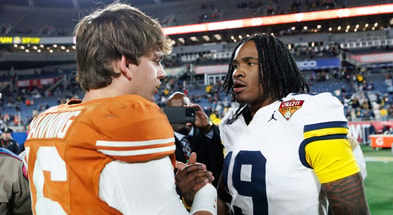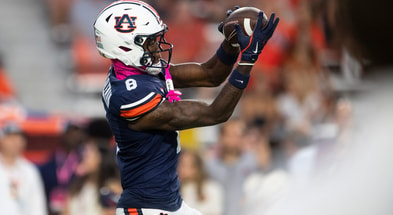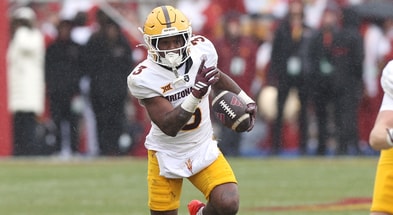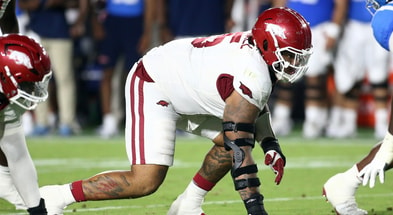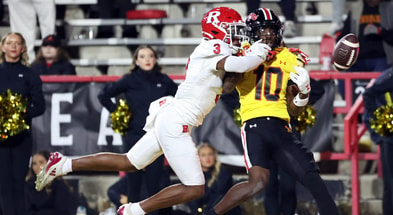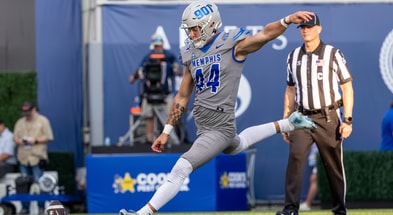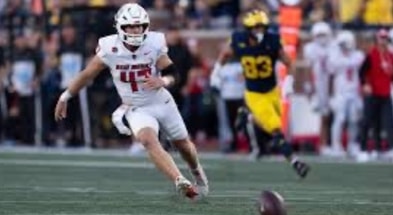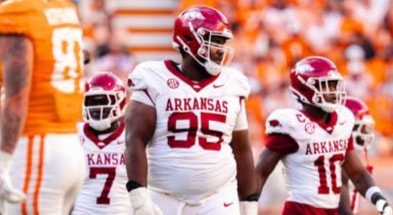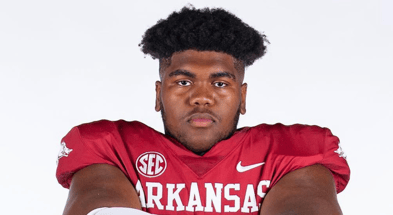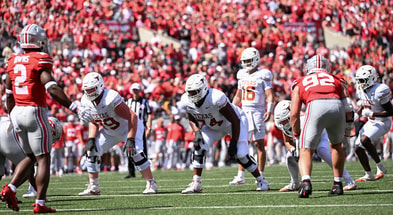Quinn Ewers, David Gbenda provide thoughts on in-helmet communication technology
Last week, Texas head coach Steve Sarkisian spoke about the significant learning curve for him and his players with in-helmet communication devices. Sarkisian has used the technology before but with professional players like Matt Ryan. It’s a lot different for the Texas head coach when he’s dealing with players like Quinn Ewers who don’t have experience hearing play-calls in their ear.
[Sign up for Inside Texas and get ONE MONTH for $1 using our March Madness special!]
Even so, Ewers said Wednesday he is a big fan of the addition, although it required some adjustment.
“I love it,” Ewers said. “I think it makes things a little bit easier for me. Obviously, we’re still signaling but I still have Sark telling me the plays in the helmet. First day it was a little shaky just because I was getting used to it, but I think it’s going to be really helpful for me.”
Ewers was very candid with the media on Wednesday regarding why he came back to Texas for a third season in burnt orange instead of declaring for the 2024 NFL Draft. Not only did he want to stop “rushing” and enjoy his time with the Longhorns, he also wanted to put together more evidence for NFL teams proving he is a top tier quarterback who has developed every year since high school.
If his final season in college coincides with the first year of in-helmet communications at this level, Ewers believes it’s something that can help him in his efforts to lead Texas back to the College Football Playoff and become on of the top professional prospects in the 2025 draft.
“100 percent,” Ewers said. “It’s only going to help.”
Similar applies on defense. Sarkisian was non-committal about which defensive player might wear the radio for the Longhorns last week. But on Wednesday, David Gbenda may have given it away.
“No I haven’t,” Gbenda said when asked if they’ve talked about who would wear the radio to hear Pete Kwiatkowski. “But I assume it’s going to be (Anthony Hill).”
Even if Hill is the wearer of the device, Gbenda spoke about how not having to look to the sideline to see gyrating coaches and simply waiting on the call from No. 0 would benefit the Longhorns.
Top 10
- 1New
Kewan Lacy
Rebels RB decides on future
- 2Hot
Nebraska QB dominoes
Huskers line up multiple visits
- 3
Kenny Minchey
Flips transfer commitment
- 4Trending
Portal Predictions
Predicting transfer commitments
- 5
Bryce Underwood
Decides on Michigan future
Get the Daily On3 Newsletter in your inbox every morning
By clicking "Subscribe to Newsletter", I agree to On3's Privacy Notice, Terms, and use of my personal information described therein.
“I feel like it will make it faster,” Gbenda said. “Instead of me having to look the side, I’m looking at the offense. I don’t have to take my eyes off the offense. I’m seeing what they’re giving me. I understand the body language of the linemen and the body language of the receivers so I can have a tidbit and pick up on the plays. I feel like it will just make the game a lot more faster and easier to pick up.”
Like many recent rule alterations, the beneficiary of the changes tend to be the offense. Even Gbenda understood how much Sarkisian being able to communicate with Ewers until the 15-second mark on the play clock or the snap of the ball would boost Texas’ efforts in 2024.
“Just like how with the offense, Quinn doesn’t have to look to the side to check it,” Gbenda said. “He just closes his ears and listens. He’s already seeing the safety and seeing what they’re giving him, or seeing the disguise that they’re trying to give him. I feel like it’ll just make the game faster.”
And, like Ewers, Gbenda saw a next-level benefit from the technology.
“In the NFL, that’s how they play anyway,” Gbenda said. “It’ll just be preparation for the next level in my opinion.”
College programs won’t find out whether they can continue to use the technology during the season until the NCAA Playing Rules Oversight Panel gives its opinion on the proposal on April 18. That’s two days before the Texas spring game.
[Subscribe to the brand new Inside Texas YouTube channel!]
If the panel says no, the Longhorns have not abandoned learning signals. But those involved, whether Sarkisian or player-leaders like Gbenda and Ewers, appear to be ready for 30-year old technology to finally reach the college game.
